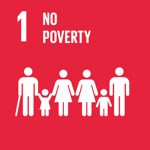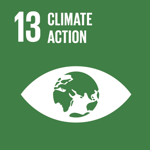Climate change and potato genetic diversity
 Bolivia
Bolivia
 Peru
Peru
Executive Summary
The Andean region is the center of origin of the potato. Ancestrally, its diversity has been the basis of feeding and survival strategies of thousands of peasant communities to face the climatic difficulties of mountain agriculture, such as frost, hail and droughts. These adverse events, however, have become more recurrent, random and severe in recent years as a result of changes in climate, causing farmers to face serious problems. Most of the potato varieties currently cultivated in the Andean region are not adapted to the climatic changes and variability, especially droughts at the beginning of the cycle, shorter and more intense rainy periods, and more frequent hail and frost. This situation affect not only the food base of the communities, but also their economic and social support, because farmers choose to migrate in search of other means of subsistence. The genetic basis for the search for desirable characteristics that determine tolerance to abiotic and biotic stresses is found in the great diversity of potatoes present in Bolivia and Peru, and which is conserved ex situ by research institutions and in situ by farmers.
The project objective was to support the farming communities of Bolivia and Peru in adapting potato production systems to climate change, taking advantage of the genetic diversity existing in the Andean region. The purpose was for potato farmers and producers to have: 1) Technological alternatives (potentially drought and frost tolerant varieties, early varieties, high-quality plant health seed, and tools for risk analysis) and 2) A prevention plan for mitigation of natural disasters and adaptation to climate change.
The technological solution
To overcome the considerable risks that small potato growers face in the high Andes due to climate change, the project proposed two strategies. On the one hand, the selection of genetic material tolerant to drought and frost and the implementation of agronomic practices, such as the use of bio-inputs. On the other hand, meteorological stations were installed in rural communities and risk maps for external events and adaptation and mitigation plans were prepared. The project made very good progress on both fronts. Participatively with members of peasant communities, researchers identified genotypes and cultivars of high tolerance to drought and frost. In some cases, they also distributed seeds of these materials in a limited way for their subsequent multiplication and testing on a larger scale. They also prepared risk maps in Bolivia, and manuals, and adaptation and mitigation plans for rural communities in Peru.
Results
In Bolivia five cultivars were identified as potentially drought tolerant and another five in Peru.
The evaluation methodologies were adjusted to simulate drought and frost conditions under field conditions in the absence of these events during the project.
The same materials identified as resistant in the greenhouse and by biochemical analysis, also had good yields under water stress due to drought (4 cv. Tetraploids). Three of those materials and three other diploids were also considered potentially frost resistant.
In Peru, 14 cultivars tolerant to extreme drought in one community and 10 tolerant to frost in another community were selected participatively.
Two potentially drought and frost resistant genotypes were identified in Bolivia.
In Cochabamba, Bolivia, the combination of chicken manure + mycorrhiza increased yields up to 500% more in diploid cultivars, and 280% in a tetraploid compared to the controls.
In Peru, promising materials were found for frost (16 genotypes) and drought (15 genotypes). Seeds from 14 highly drought tolerant cultivars were distributed to the two communities where the project worked with.
In Bolivia, vulnerability maps and frost and drought risk maps were produced. In Peru, two documents were prepared on participatory community assessment and on risks to native potatoes from threats from climate change, and one document on methodological approaches used in the project and adaptation options. Also, a climate change mitigation and adaptation plan was prepared for the two peasant communities.
Two presentations were made at an international congress. Two master's theses (presented in France and Belgium), one doctorate, and 12 bachelor's theses (five in Peru and seven in Bolivia) were carried out in the project, and 9 scientific articles and two manuals were prepared.
Beneficiaries
The direct beneficiaries were members of the peasant communities participating in the project who had access to drought and frost tolerant potato genetic materials, as well as plans to adapt and mitigate the effects of climate change. Also, the numerous researchers, technicians, and students participating in the project activities, and the hundreds of researchers and professionals who had access to the results of the project, through the information presented at the international congress, scientific publications and manuals.
Sustainable Development Goals



Participating Organizations
Executor
- Fundación para la Promoción e Investigación de Productos Andinos (PROINPA) - Bolivia
Co-executor
- Centro Internacional de la Papa (CIP) - Perú
- Instituto Nacional de Innovación Agraria (INIA) - Perú




